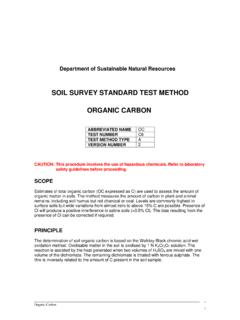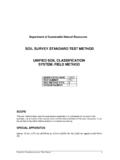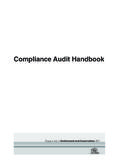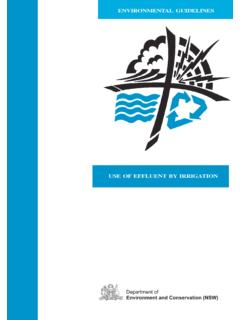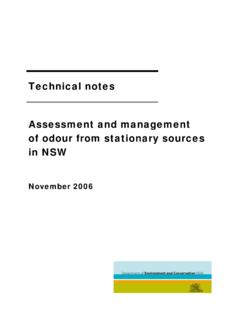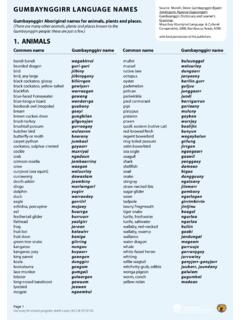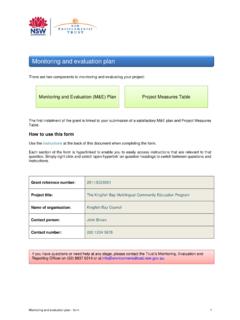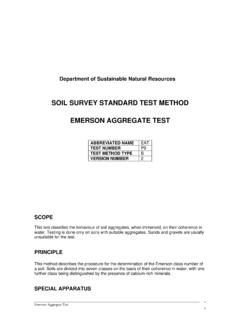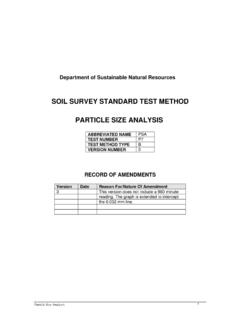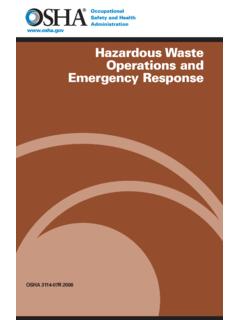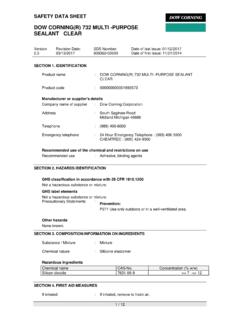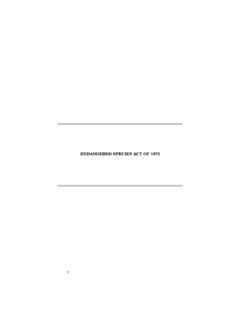Transcription of Compliance Audit Handbook
1 Compliance Audit HandbookThis Compliance Audit Handbook has been produced by the Compliance and Assurance Section of the Department of Environment and Conservation NSW (DEC). For technical information on the matters discussed in the Handbook , contact the DEC Compliance and Assurance Section on (02) 9995 5000. Published by: Department of Environment and Conservation NSW 59 61 Goulburn Street, Sydney PO Box A290 Sydney South, NSW 1232 Phone: (02) 9995 5000 (switchboard) Phone: 131 555 (environment information and publications requests) Phone: 1300 361 967 (national parks information and publication requests) Fax: (02) 9995 5999 TTY: (02) 9211 4723 Email: Website address: DEC is pleased to allow this material to be reproduced in whole or in part, provided the meaning is unchanged and its source, publisher and authorship are acknowledged.
2 DEC 2006/13 ISBN 1 74137 787 0 Original version: February 1997 Revised: February 2006 Printed on recycled paperPreface Purpose of this Handbook This Handbook was prepared by the Department of Environment and Conservation NSW (DEC) as a guide for DEC officers undertaking Compliance audits. A Compliance Audit is an assessment of an auditee s activities to determine whether they comply with the relevant regulatory requirements. The Handbook may also be used by other organisations undertaking Compliance audits including public authorities, industry and industry groups, professional associations, consultants and contractors; and as an educational resource by students. The Handbook provides general procedures and protocols for conducting Compliance audits.
3 These are designed to ensure a consistent approach to audits, helping to ensure all audits are adequate, reliable and comparable. Although the Handbook is designed for use as a standalone document, it is recommended that it be used with the international standard adopted in Australia for environmental auditing: AS/NZS ISO 19011:2003, Guidelines for quality and/or environmental management systems auditing (see References). This Handbook has been prepared for the purpose described, and no responsibility is accepted for its use in any other context or for any other purpose. Contents Preface 1 1 What is a Compliance Audit ?..1 What is an auditee?.. 1 Compliance Audit as a regulatory tool in DEC.
4 1 Objectives of the Compliance 1 Knowledge and skills of 2 DEC Audit procedures .. 3 The Audit process .. 3 Pre-site visit 3 On-site 7 Post-site visit activities .. 9 3 Quality assurance and record 13 Quality assurance .. 13 Record 13 Glossary .. 14 15 Appendix 1 Audit plan .. 15 Appendix 2 File record of site 17 Appendix 3 Example of a risk assessment process .. 18 Appendix 4 Example of a quality 19 References .. 20 List of tables Table 1: Audit activities .. 3 Table 2: Sample checklist Table 3: Compliance , non- Compliance , not determined and not applicable assessments .. 10 Table 4: Regulatory review 12 Table 5: Records to be kept for 13 Compliance Audit Handbook 1 1 Introduction What is a Compliance Audit ?
5 An Audit is: a systematic, independent and documented verification process of objectively obtaining and evaluating Audit evidence to determine whether specified criteria are met . AS/NZS ISO 19011:2003, Guidelines for quality and environmental management systems auditing (see References). The specified criteria in Compliance audits conducted by the Department of Environment and Conservation NSW (DEC) are generally the legal and regulatory requirements DEC administers. What is an auditee? An auditee is a person or organisation being audited. DEC audits organisations or individuals whose activities are regulated by legislation DEC administers. DEC may Audit , for example, industries operating under environment protection licences or individuals or organisations holding permits relating to threatened species or Aboriginal objects and places.
6 Compliance Audit as a regulatory tool in DEC DEC has responsibilities and powers under a range of NSW legislation including: environment protection legislation covering air and water quality, waste, contaminated land, noise control, pesticides, hazardous chemicals, transport of dangerous goods, forestry and radiation conservation legislation protecting biodiversity and threatened species legislation protecting Aboriginal cultural heritage. DEC uses Compliance audits as one of its regulatory tools, to assess the extent to which a licensee or other regulated entity is complying with its legal requirements, and to review achievable environmental standards. Objectives of the Compliance Audit Compliance audits in DEC are used to achieve the following objectives: maintaining the integrity of the regulatory system administered by DEC, ie, legislation, licences, notices, consents ensuring credible and robust regulation improving Compliance with legislative requirements through public Audit reporting, ensuring DEC s regulatory activity is open and transparent ensuring that statutory instruments are robust and are appropriately used to achieve desired environmental and conservation outcomes ensuring that environmental and conservation regulation across NSW is consistent and transparent.
7 Compliance Audit Handbook 2 A DEC auditor will: assess Compliance with environmental and conservation legislation. A DEC auditor may assess Compliance with legislation and the statutory instruments administered by DEC. This may include assessing Compliance with conditions attached to statutory instruments and the broader statutory requirements of various Acts and Regulations. review statutory instruments issued to the auditee. Activities that may have an environmental impact are examined to determine whether they are adequately covered by the instruments. The DEC will review the quality of the instruments by assessing their conditions or criteria for consistency, their legal enforceability, and their degree of environmental, conservation or cultural heritage protection.
8 Report findings and follow-up action. A DEC auditor will report on the scope of the Audit and document the assessment of Compliance . A follow-up action program may be established to address non- Compliance . Stakeholders awareness of environmental issues and their confidence in DEC s regulatory role increase through DEC communicating and promoting Audit findings. Stakeholders include the community, industry and licensees. Knowledge and skills of auditors Auditors should have the necessary knowledge and skills to apply Audit principles, procedures and techniques when undertaking Compliance audits. DEC has its own internal environmental auditor training program. A DEC officer who has undertaken the training and has demonstrated that they have the required competencies to undertake Compliance audits is eligible for certification as a Provisional Environmental Auditor with RABQSA International.
9 The auditors will have the knowledge and ability to conduct audits in accordance with this Handbook and any other internal work procedures. DEC staff conducting Compliance audits will act ethically, be objective and without bias, and be versatile, open-minded and decisive. Compliance Audit Handbook 3 2 DEC Audit procedures The Audit process The Audit process involves tasks that can be grouped into pre-site visit activities, on-site activities and post-site visit activities. Table 1: Audit activities Activity More information Pre-site visit activities Planning and preparing for the Audit see Collecting background information see Compiling checklists see On-site activities Conducting an opening meeting see Collecting Audit evidence through gathering information, observations and interviews, and sampling see Conducting a closing meeting see Post-site visit activities Evaluating Audit evidence see Compiling a Compliance Audit report see Developing a follow-up action program see Conducting a regulatory review see It is important to understand that an Audit s activities are not restricted to the site visit.
10 Careful and thorough planning before conducting on-site activities and the post Audit evaluation are just as critical to the Audit s success as the proper conduct of a site inspection. Pre-site visit activities In achieving a successful Audit , the value of good planning and preparation cannot be overemphasised. Proper planning should ensure that appropriate resources and equipment are available and time is allocated to carry out the Audit in the most efficient and effective way. Audit planning and preparation The Audit plan outlines the Audit s objectives, scope and timetable, and the products that the Audit will generate. See Appendix 1 for an example of an Audit plan. An Audit plan should include the following key elements: the Audit objectives the Audit criteria and any reference documents the Audit scope a quality plan identifying reviews to be undertaken an assessment of logistics Compliance Audit Handbook 4 an Audit timetable roles and responsibilities of Audit team members the allocation of appropriate resources to critical areas of the Audit .
